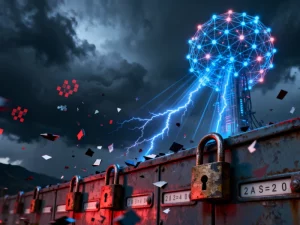Downtime is inevitable. Whether it’s caused by a system error, power failure, or unexpected cyber incident, every organization will face moments when operations come to a sudden halt. The true measure of resilience, however, is not about avoiding downtime altogether, but about how fast and effectively a business can recover when it happens. A well-structured downtime recovery plan transforms chaos into coordinated action, ensuring that operations, trust, and data stability are restored with precision and confidence.
Understanding the Phases of Downtime Recovery
Recovery is more than simply restarting systems. It’s a process that demands structure, clarity, and coordination. Effective downtime recovery unfolds in several phases:
- First comes assessment, identifying the scope and cause of the disruption. Is it an internal malfunction or an external attack? Which services are affected, and how severe is the impact?
- Next is communication, where leaders must deliver timely updates to internal teams and stakeholders to maintain transparency and direction.
- Then comes restoration, where IT teams work to bring systems back online safely without risking further instability or data loss.
- Finally, the post-incident review helps refine strategies, strengthen weak points, and ensure the same issue does not happen again.
These phases turn reaction into strategy, giving organizations a clear roadmap from downtime to recovery.
Strategic Response: From Chaos to Control
When downtime hits, time becomes your most valuable currency. The first few minutes often determine whether recovery is smooth or spiraled into prolonged disruption. A strategic response begins with prioritization by identifying which systems are mission-critical and must be restored first. For instance, communication channels and transaction platforms usually take precedence over nonessential functions.
Next, team coordination plays a key role. Clearly defined roles ensure no one scrambles or overlaps tasks during high-stress moments. A dedicated incident response team, consisting of IT, security, and operations experts, should have preassigned responsibilities and escalation procedures.
Most importantly, decisions must be data-driven, not emotional. Quick yet informed choices based on system analytics, monitoring reports, and predefined playbooks help prevent costly mistakes during the rush to restore operations.
The Role of Automation and Backup Systems
In downtime recovery, automation is a silent hero. Automated failover systems, redundant servers, and synchronized data backups drastically reduce recovery time. With real-time replication and cloud-based redundancy, businesses can reroute services to standby systems within seconds, minimizing user disruption.
Regular testing and validation of these backup systems are equally vital. A backup plan that’s never tested is a risk of failure. Organizations that conduct simulated downtime exercises often recover faster, as teams already know which steps to execute under pressure. Automation does not eliminate the human element; it empowers it. Handling repetitive restoration tasks allows experts to focus on critical thinking required to stabilize and secure the broader system.
Communication: The Often-Overlooked Pillar
While technology drives recovery, communication sustains confidence. During downtime, silence can cause more harm than disruption itself. Customers, partners, and employees expect updates, not perfection, but clarity. An effective recovery plan includes internal communication channels for coordination and external communication strategies for transparency. Providing consistent updates about progress and estimated restoration times helps manage expectations and preserve trust. When communication is neglected, speculation fills the void, often leading to reputational damage even after systems are restored. The right words, delivered at the right time, can maintain composure in the midst of a crisis.
Resilience Beyond Recovery
Downtime recovery is not just about getting back online, but about building strength that lasts beyond the incident. True resilience comes from preparation, visibility, and trust in your digital foundation.
At Terrabyte, we empower organizations with integrated infrastructure and cybersecurity solutions designed to enhance reliability and minimize disruption. From automated failover systems to advanced monitoring and defense technologies, our solutions help businesses recover swiftly, securely, and confidently, ensuring that when downtime happens, you are already one step ahead.




